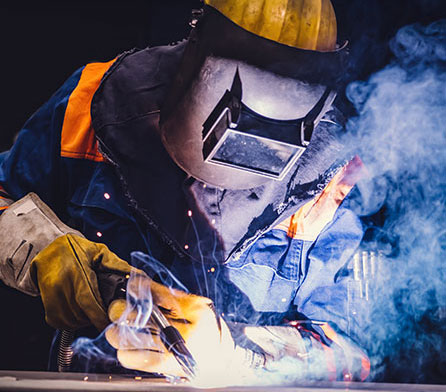5 Tips for the Care and Use of Your Engine Driven Welder During the Winter
Maintaining your engine driven welder during colder months takes some extra attention to keep it operating at optimum levels and avoid costly downtime and repairs. Although we’re well into winter, we can likely expect more cool temperatures ahead, and it’s never too late to prepare your equipment accordingly. Here are a few things you can do to your engine welder to improve the likelihood of success when you are welding in the cold weather.

- Inspect and change the oil. Cold weather can cause the oil in your engine driven welder to thicken, slowing down the flow to the engine’s moving parts. A lighter weight oil like 5W-30 is typically recommended to provide better viscosity and circulation throughout the engine.
- Check your antifreeze levels and replace your fluids, if needed. Antifreeze is essential in the winter, as it prevents freezing and corrosion on metal components. Lubricate all moving parts to reduce friction and avoid rust formations caused by wet weather conditions.
- Check all rubber hoses for cracking. Replace those that have become hard, brittle or cracked. Do not wait until they fail entirely.
- Cover your welding machine. During cold winter months, welding machine covers help keep the elements, like blowing snow and rain, away from critical parts. A cover will also keep the sun’s UV rays off of hoses, wires and other plastic parts that can degrade in the sun.
- Preheat your workpieces. When welding in colder temperatures, operators may experience two issues. Unaddressed, colder temperatures can result in poor weld penetration between two base metals – which can trigger weld failure. It is advisable to preheat your workpieces to help promote good penetration and high-quality welds. Also, when left cold, base metals will tend to serve as heat sinks that draw out the heat of your welds. If your welds cool off too quickly and unevenly, they will be more prone to cracking. Preheating can help with slower, even weld cooling.
In addition to the tips above, we also want to stress how important it is to take care of your personal safety during these times. Welding is a manual process that demands plenty of concentration and skill. When you are cold, your concentration can be significantly impaired, potentially injuring yourself or others. Dress in layers (including flame retardant jackets), cover your head and ears with a winter line or face hood, wear wool or fleece-lined insulated welding gloves – as well as waterproof boots – and do your best to stay dry.




























